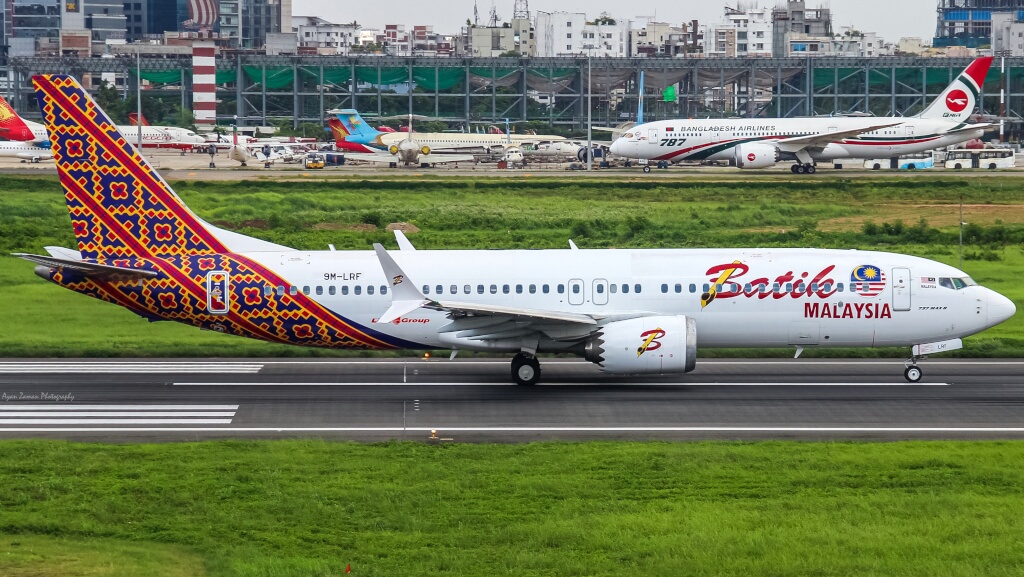The Airbus A321XLR, powered by Pratt & Whitney GTF™ engines, entered service in 2024. Photo: Airbus
The aerospace industry is driven by the quest for fuel efficiency and the commercialisation of space. However, international tensions are impacting the market for titanium, nickel alloys and other materials used in the industry.
By James Chater
The deteriorating security situations in Europe and the Middle East are bullish for military aerospace and for the metals it consumes, such as titanium, nickel, vanadium, aluminium, etc. Recent events have prompted the EU and the UK to announce plans to increase military spending, which will benefit European companies such as Rolls-Royce, Dassault, Airbus, BAE, Thales, Leonardo and Saab.
US tariffs have now upset the market, placing the USA at odds with countries that supply the bulk of its critical minerals, such as nickel and cobalt, both of which are indispensable for jet engines. The 25% tariffs on steel and aluminium will impact the aerospace industry especially, as these are the two metals most used in aircraft construction.
Civil aircraft
Even before tariffs, there were a few clouds on the horizon. The industry had been recovering from Covid-19, but supply chain issues were still causing delays in the delivery of new aircraft. The war in Ukraine prompted titanium importers to diversify away from Russian sources and revealed US supply-chain vulnerabilities, specifically its lack of titanium sponge producers. However, IperionX’s revolutionary low-carbon manufacturing technology, which supersedes the Kroll process, should help matters.
In addition, civil aircraft have been beset by safety and quality issues. These have mainly affected Boeing.
A series of incidents has exposed a defective safety culture leading to fatal accidents. Two 737 MAX 8s crashed in 2018 and 2019 because of flaws in the software design that took flight control away from the pilots without their knowledge. In 2024 further accidents occurred: a sudden loss of pressure at Portland, Oregan, on 5 January, due to an incorrectly installed door plug; a further decompression incident on 22 June at Incheon; then on 5 December 2024 a 737-800 flown by Jeju Air crashed at Muan International Airport, South Korea when a bird strike caused a malfunction in the hydraulic system controlling the landing gear. Boeing was also obliged to disclose that it had procured titanium though a distributor who had falsified records about the material’s source. Boeing’s problems have allowed Airbus to surge ahead of its rival. Its new narrow-body A321XLR, with a “wide-body feel” and extended range, entered commercial service on 30 October 2024. The new aircraft is proving a commercial success, allowing more long-haul flights. To extend its range, however, the plane required a new kind of fuel tank, the rear centre tank (RCT), which is integrated into the fuselage. The FAA expressed concerns that this design poses a fire risk, so has stipulated that, if a crash occurs, the RCT should be able to withstand a fire for up to five minutes to allow time for evacuation.
China’s debut
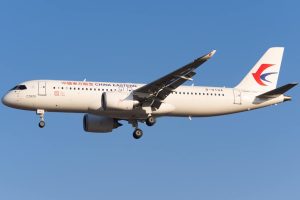
The world’s first Chinese-made passenger aircraft entered commercial operation on 28 May 2023. The Comac C919 narrow-body plane competes with the A320 and Boeing 737 families. It is powered by a choice of CFM’s LEAP-1C or the indigenous ACAE CJ-1000AX engine. Alcoa Fastening Systems is a supplier. Comac is also working on a larger, wide-body aircraft, the C929, which is currently in the preliminary design phase.
In addition, Airbus experienced issues with the PW1100G-JM geared turbofan engines delivered by Pratt & Whitney for its A320 family. The metal powder used to make certain parts (including the blisks (integrally bladed rotors) of the high-pressure turbine and the disks of the high-pressure compressors) was found to be contaminated and therefore prone to corrosion and cracking. This led to a recall of GTF engines that put one-third of all jets powered by this engine type in furlough. Also affected were Embraer E-Jets.
Despite the problems besetting aerospace, however, the long-term prospects for civil aircraft are still good, with future growth likely to be motivated by the quest for greater fuel efficiency. Sustainability is also the reason behind the numerous projects to develop biofuels and aircraft fuelled by liquid hydrogen. For instance, Airbus is involved with a project to set up the world’s first hydrogen airport hub in Spain and a similar project in Houston, USA. Also running on hydrogen will be the BWB (blend-ed wing body aircraft) being developed by NASA and Boeing and currently undergoing tests. This radically new design will set new standards for fuel efficiency.
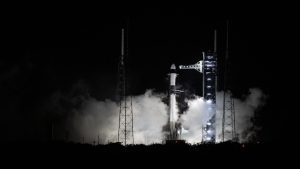
Space
In recent years, the space industry has made a dramatic comeback, and several market reports predict rapid growth in years to come, driven by scientific research, surveillance, communications and military spending. For instance, Mordor Intelligence predicts compound annual growth of 4.74% from 2025 to 2030(1). There are now about 10,000 satellites in space. This growth affects not only North America but also Europe, China, India, and other regions.
Titanium
Titanium and nickel alloys are among the most critical metals applied in modern aircraft and spacecraft. In modern aircraft, titanium alloys are used more in twin-aisle than in single-aisle airplanes, to make weight savings and improve fuel efficiency. They are mainly applied in the engine (compressor discs, blades, vanes and cases), but also in components such as landing gear and ducting, structural parts (chords, spars, wing boxes and pylons), in the nacelle, in fasteners and in brackets.
Titanium use has increased thanks to the greater use of fibre composites, with which Ti has greater galvanic compatibility than other metals. However, in engines there has been a trend towards replacing Ti with composites in the fan blades and with nickel alloys in the HP compressor, to handle higher temperatures.
For rocket engines, ATI has developed C103, a heat-resistant niobium-hafnium-titanium powder alloy from which parts are 3D-printed.
Titanium is also used in fighter aircraft and engines, helicopters and other military applications. It makes today’s high-thrust engines possible through alloys with elevated fatigue strength, creep resistance and high thermal strength. Military airframes require a higher percentage of titanium than commercial planes because of their extreme dynamic and static loads.
Nickel alloys
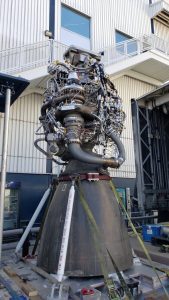
Nickel alloys are used to handle high temperatures and for cryogenic applications such as impellors of rocket engines. For instance, for NASA’s Artemis I spacecraft ATI supplied the nickel-alloy plate for the powerhead that delivers, mixes and ignites the liquid oxygen and liquid hydrogen fuels feeding the combustion chamber.
For the Raptor engine of its Starship, SpaceX developed two nickel superalloys based on Inconel, SX300 and SX500, which have outstanding resistance to high pressures, as well as high corrosion resistance to the liquid methane and liquid oxygen fuel. The alloys are being used to 3D-print certain components, including turbopumps and manifolds.
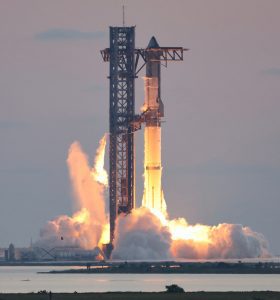
Stainless steel
The Starship uses a proprietary stainless-steel, 30X (an improved version of 304) in the heat shield as it was found to be stronger than carbon fibre and more heat-resistant than aluminium, as well as being able to perform in cryogenic conditions. The spacecraft also uses seamless stainless-steel pipes supplied by Centravis.
Cryogenic tanks on the Ariane-6 rocket were made using new welding techniques from an aluminium-lithium alloy, lighter than the aluminium-alloy parts used for Ariane-5, thereby reducing mass.
For the Vulcan Centaur rocket, ATI produced a specially engineered upper-stage fuel tank out of stainless steel to ensure lightness and strength. The fuel is a liquid hydrogen and oxygen propellant.
Recent spacecraft and projects
Ariane. First proposed by France in 1973, this is a series of expendable launch vehicles supported by the European Space Agency. The launchers were developed by Aérospatiale, which later became Airbus, together with Safran and ArianeGroup. They are fuelled by liquid hydrogen and liquid oxygen. Ariane rockets have carried Johannes Kepler ATV and the James Webb telescope into space. On 6 March 2025 Ariane-6 carried out its first commercial flight.
NASA is collaborating with SpaceX and Boeing to fly astronauts to the International Space Station.
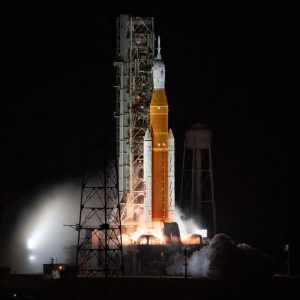
Artemis, established in 2017, is NASA’s programme to resume lunar exploration and establish a base on the Moon to support a mission to Mars. It is supported by the Space Launch System (SLS), the most powerful rocket NASA has developed. Artemis I (2022) sent the unmanned Orion spacecraft round the Moon. Five further missions are planned, of which Artemis III (2027) will land a crew on the Moon. After Artemis VI (2031), NASA plans yearly landings on the Moon. For the SLS for Artemis II, Boeing built the engine, the liquid hydrogen tank and the liquid oxygen tanks.
Starship, developed by SpaceX, is the most powerful rocket ever developed. It is the first company to propose reusable systems. (There are two configurations, one reusable and one expendable.) Still in the testing phase, it is expected to act as a lunar lander for Artemis III. It consists of the Super Heavy booster and the spacecraft. Both are equipped with Raptor engines burning liquid methane and liquid oxygen.
New Glenn. Developed by Blue Origin, this partially reusable two-stage heavy-lift rocket was launched in Florida on 16 January 2025. The two stages are powered by liquid hydrogen/liquid oxygen engines.
Vulcan Centaur. Launched in 2024, this is a two-stage heavy-lift launch vehicle produced by United Launch Alliance. It mainly serves US intelligence and defence.
Galileo Second Generation (G2). In Germany, Airbus started production on G2 satellites in December 2023.
India’s ISRO is a space exploration institute which includes the launch of the Mangalyaan and Chandrayan-3 rockets. The Gaganyan mission will launch an Indian astronaut into space.
About this Featured Story
Appearing in the May 2025 issue of Stainless Steel World Magazine, this Featured Story is just one of many insightful articles we publish. Subscribe today to receive 10 issues a year, available monthly in print and digital formats. – SUBSCRIPTIONS TO OUR DIGITAL VERSION ARE NOW FREE.
Every week we share a new Featured Story with our Stainless Steel community. Join us and let’s share your Featured Story on Stainless Steel World online and in print.



